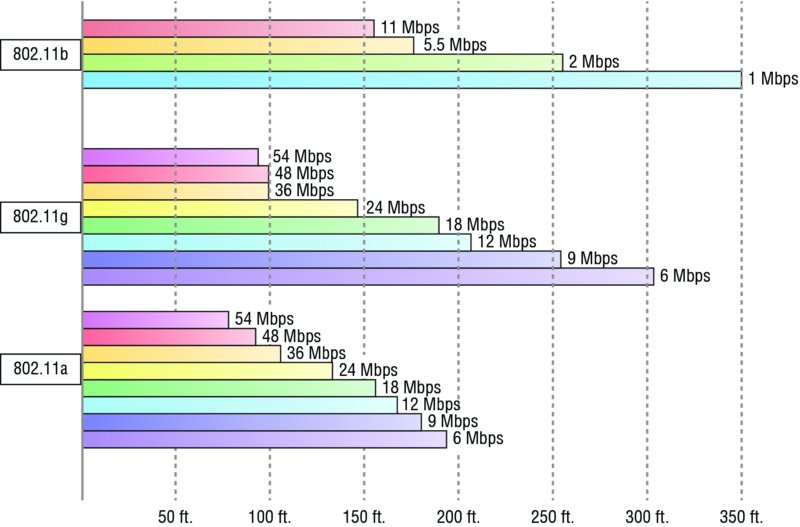Comparing 802.11 Standards
Before I move on to wireless installations, take a look at Figure 12.6, which lists, for each of the IEEE standards in use today, the year of ratification as well as the frequency, number of non-overlapping channels, physical layer transmission technique, and data rates.
Figure 12.6 Standards for spectrums and speeds

I mentioned earlier that 802.11b runs DSSS, whereas 802.11g and 802.11a both run the OFDM modulation technique (802.11ac runs up to OFDM 256-QAM).
Range Comparisons
Now let’s take a look at Figure 12.7, which delimits the range comparisons of each 802.11 standard and shows these different ranges using an indoor open-office environment as a factor. (We’ll be using default power settings.)
Figure 12.7 Range comparisons of 802.11 standards

You can see that to get the full 54 Mbps benefit of both 802.11a and 802.11g, you need to be between 50 feet and 100 feet (maximum) away, which will likely be even less if there happen...
























































